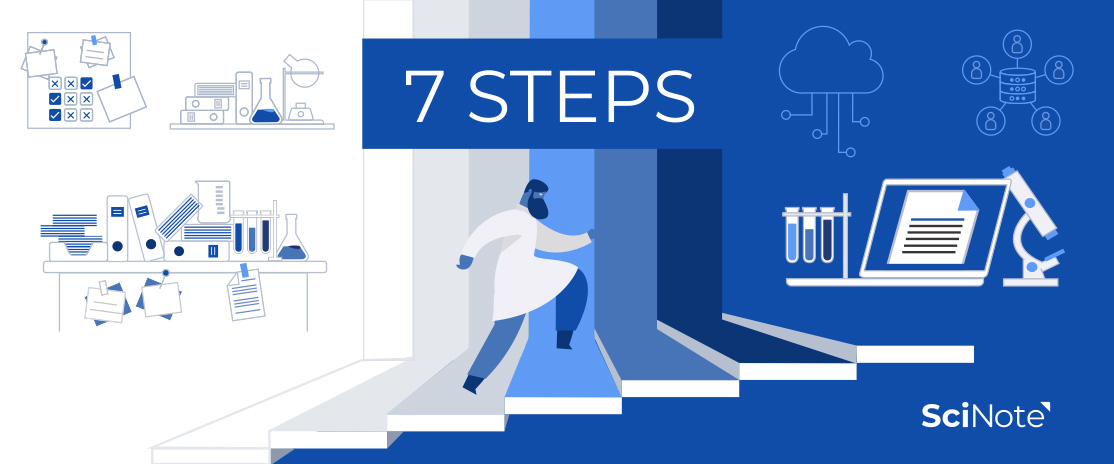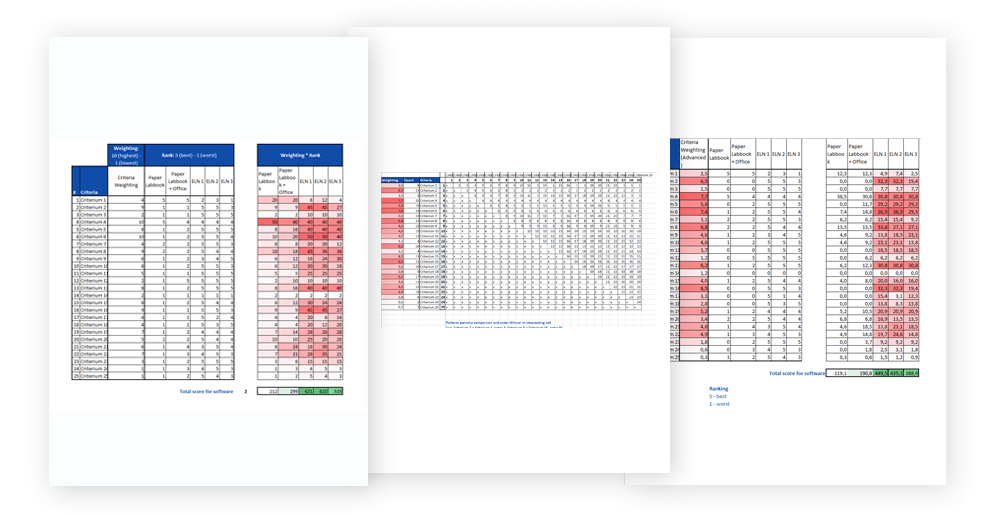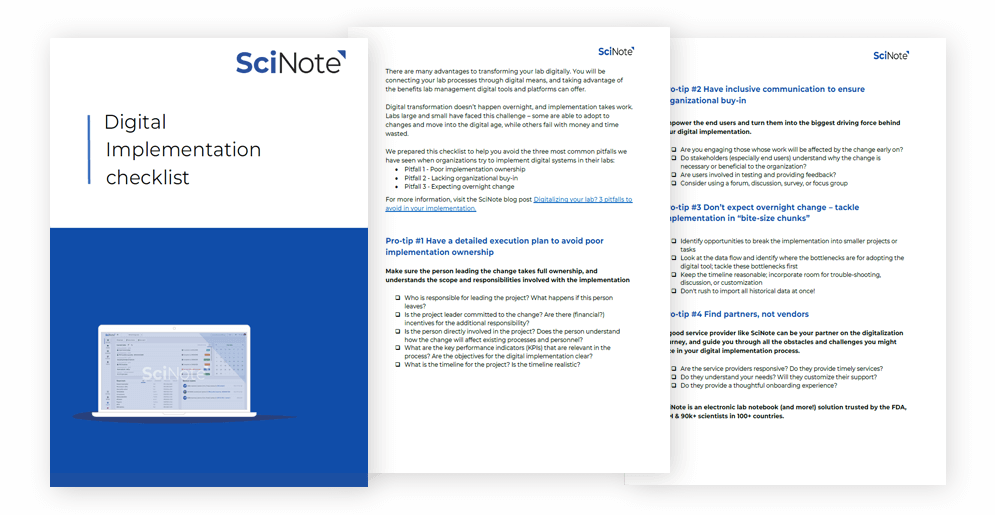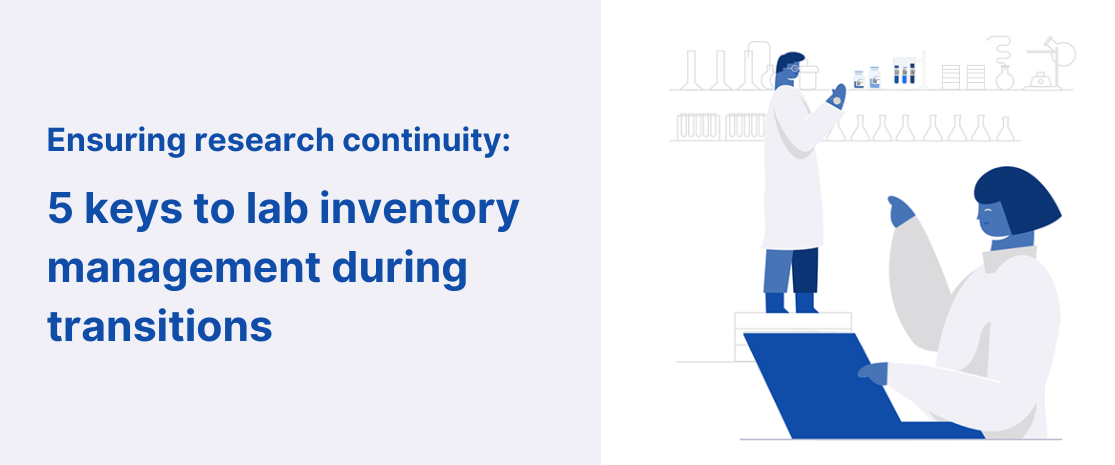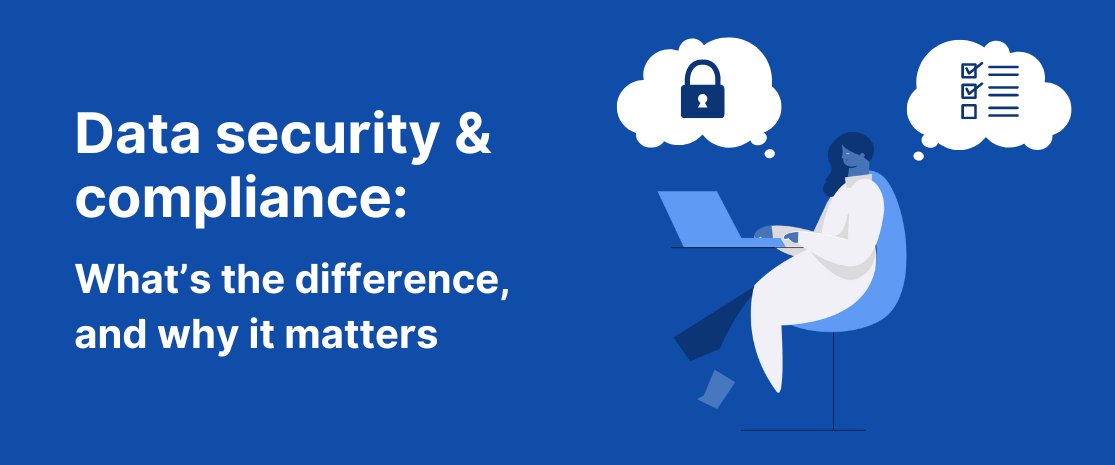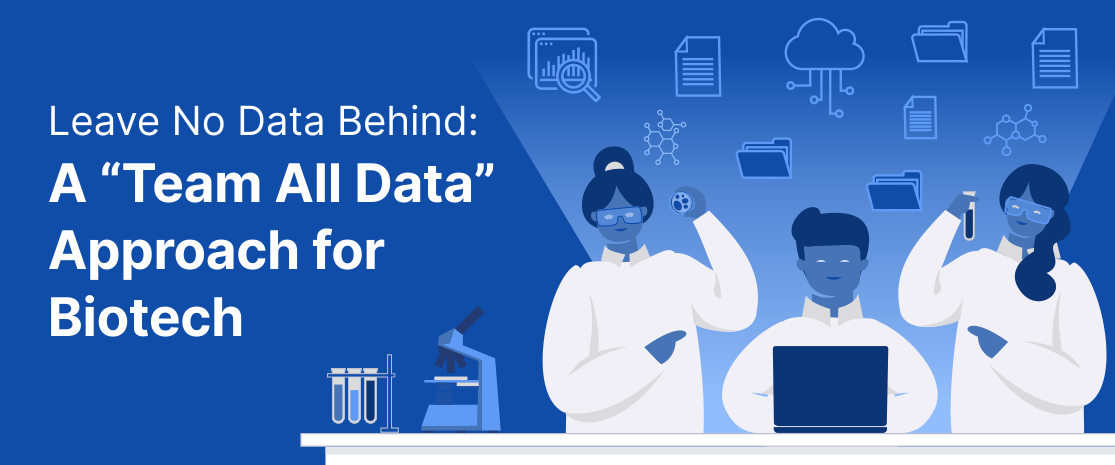7 steps to get started with Research Data Management
Well-organized research data can help you improve research efficiency, meet funding and regulatory requirements, and optimize the potential of your research – leading to publication, funding, and collaboration opportunities. On the other hand, poorly managed data can lead to serious consequences such as lost funding and delays in generating research impact.
As more and more data exist in digital formats, and digital tools become mainstream, managing data digitally has become more efficient and effective. If you are not sure how to get started to manage your research data digitally, here we summarize 7 steps you can take and relevant resources that can get you started.
You can also watch our webinar below on this topic, and download the slides here.
Table of contents
- Putting research data management in context: FAIR
- 1. Have a clear goal in mind
- 2. Understand best practices
- 3. Review how you’re managing data at the moment
- 4. Technical requirements/needs
- 5. Communicate the change
- 6. Develop a plan toward your goal
- 7. Review, improve, and maintain
- Different ways to manage data – challenges and actions
- Taking the first step now is important
- References
Putting research data management in context: FAIR
“Good data management is not a goal in itself, but rather is the key conduit leading to knowledge discovery and innovation, and to subsequent data and knowledge integration and reuse by the community after the data publication process. “
– Wilkinson, M., Dumontier, M., Aalbersberg, I. et al. The FAIR Guiding Principles for scientific data management and stewardship 1. Sci Data 3, 160018 (2016).
FAIR is often considered the guiding principle of digital research data management. Specifically, it refers to the “findability, accessibility, interoperability, and reuse of digital assets 2”. It is important to understand FAIR principles, as every step we will be taking next will be closely connected to FAIR.
To summarize, there are four key concepts:
• Metadata & data should be easy to find for both humans and computers.
• Know how data can be accessed, and the authentication and authorization required for accessing data.
• Data should be integrated with other data, and interoperate with applications or workflows for analysis, storage, and processing.
• Metadata and data should be well-described so that they can be reused – replicated and/or combined in different settings.
It’s also important to know that FAIR is applicable not only to data but also metadata (“data about data 3”) and relevant infrastructure 2.
Resources:
• Go FAIR: Fair Principles
• Fairsharing.org
Here are the 7 actionable steps to get you started.
1. Have a clear goal in mind
Having a clear goal when it comes to data management gives you something that you can work toward. Even more importantly, it can prevent distractions, and help you prioritize what’s critical and urgent, and what’s optional and only “good to have.”
Your goal could be to meet regulatory requirements, to comply with funding agency guidelines, to prevent data loss, to improve sharing and reproducibility, or to be able to access and analyze past data quickly. No matter what your goal is, have this written down, so that you can keep yourself on track when it comes to research data management.
You can also take this one step further to define some specific and measurable targets, or to include a time frame for achieving your goal. Consider taking a SMART goal approach with this. Your timeframe can be set to align with the requirement of your goals; for example, prior to submitting your progress report.
Here, if you already created a data management plan, make sure to refer to the plan to provide the specifics. There are a few tools you can use to help you create a data management plan.
Resources:
- What is data management plan? via IBM
- Tools for developing data management plans:
- NIH Data Management and Sharing Policy – 9 tips for preparing your DMS plan [Guide]
- Going digital pays dividends for busy labs via Nature
- Using Data Lineage and Traceability to Optimize Publishing Potential via Technology Networks
2. Understand best practices
A few common best practices when it comes to research data management include:
Create naming conventions. Ensure the file name is something descriptive, relevant, and allows for easy sorting/filtering. You can incorporate dates, version numbers, and project number within the file name. Also, keep the file names short, so that you can quickly scan through the files to find the one you need.
Version control. Have a system in place to track file versions and activities. This will help you identify any changes made to the original file. At any point if you are unsure, you will be able to go back to find the person who made the change and the reasons for the change.
Metadata. Make sure to capture metadata, include the project title, its description or summary, the person who developed the file, and relevant key words within the file. Additional metadata might be necessary to ensure that the research work can be reproduced 5.
Cross references and documentation. Make sure you can trace from file to file. For example, you might want to find out which reagent stock was used in the original experiment, or locate relevant protocols used in the experiment. Also ensure you can locate any supplementary information, surveys, reports, raw data, and other notes.
When organizing your files, make sure to:
Create a hierarchy for your file folders. Start with broader topics, and then narrow down to specifics.
Back up. Make sure you back up your files regularly, so if one copy is no longer available – could be due to accidents, staff turnover, or other natural disasters – you can always revert to your back up.
Be consistent. Develop a system, revise it during your transition to digital data management, and stick to your system as much as you can. Also, make sure to share the best practices within your lab, so all team members can follow them.
Resources:
- Cambridge Data Management Guide
- Harvard Longwood Research Data Management (on naming conventions)
- Danish National Forum for Research Data Management: Go Fair (on metadata)
3. Review how you’re managing data at the moment
Look closely at how you are managing data now, and ask a few key questions that will help you plan the next steps:
- What data are generated? And in what format?
- How are they preserved and consolidated?
- Who has access to them? Who needs access to them?
- What happens when you have collaborators?
- How do you access data when you need them?
4. Technical requirements/needs
In some cases, there are certain technical requirements you will need to meet when it comes to managing data digitally. These are especially critical if you are considering using a 3rd party service and have a limited budget. These technical requirements should align with the goal you set, and in some cases your organization or institutional needs. If you have compliance needs when it comes to data privacy and regulatory requirements, make sure to first get clarity on such requirements with your IT team or department first.
Some technical requirements worth considering include:
- Do you want data hosted locally or in the cloud?
- Do you want to use an all-in-one platform? Or have a “hub” connecting to different platforms?
- What’s your back up requirements?
- What are your data protection and security needs (e.g., 2FA, access control, encryption)?
- Can you create cross reference, activity log, or version control (traceability)
- What are your collaboration needs (document sharing, tag, chat, comments)?
- Do you need to comply with 21 CFR Part 11/Annex 11, GxP, data management and sharing policy, or other guidelines and requirements?
- What are the requirements identified in your data management & sharing plan?
- Do you have specific data privacy needs (defined by project/institution/organization)
- Do you want other tools to help research management? (inventory, integrations, API, reporting, etc)
- Who will maintain the technical infrastructure (DIY? Digital platform vendor? IT department). If it is maintained by a 3rd party vendor, how accessible is the support?
- Are training materials available? Or will you develop your own?
If you are planning to use a digital tool or platform to help you with research data management, we strongly encourage you to reach out to the vendor to learn more about the digital solution, and to try it out. This will help reduce the time you spend on researching the product on your own.
Also, some vendors offer both a free version of the solution with limited features (freemium), and a free trial that gives you access to all premium functionalities. Take advantage of the free trial instead, since you want to explore all the possibilities to help you make your decision.
Resources:
- Cloud servers or dedicated private servers – is your data at risk?
- SciNote Data Protection White Paper
- 21 CFR Part 11 compliance – PDF & Key Things to Know
- Use an ELN as the platform to facilitate efficient collaboration [Case Study]
- Electronic Lab Notebook and GLP (Good Laboratory Practice) Compliance
Are you evaluating electronic lab notebooks?
Download the free ELN evaluation Excel template by NEUWAY Pharma
Downlad now (Excel)5. Communicate the change
Communication is a key when it comes to changing existing practices within the lab. Make sure everyone in the lab understands why these changes are happening. This could mean involving lab members in decision making, listening to feedback from those who handle data day-to-day, and providing lab members with the context and background on why this is important to switch to managing data digitally.
If only some of the lab members follow the new practices, but not the others, the benefits digital data management can bring will be drastically reduced – it will simply defeat the purpose of moving to managing data digitally.
Resources:
6. Develop a plan toward your goal
Now that you have a good understanding of what requirements you have, and a clear goal that you want to achieve, it’s time to prepare a plan that will help you work toward your goal.
There are a few specific decisions to make:
How should the transition happen. Will you transition past, current, or future data? Based on our experience, start with what you are currently working on and future data – this will enable you to work out any issues you might have. Then, decide if you want to convert past data, or perhaps only some of them that are necessary.
Who will be responsible. There are a few possibilities to consider:
- Students? Post-docs? Keep in mind the turnover, as students and post-docs tend not to stay in the lab long-term. Also, does the student/post-doc has enough authority in the lab to push for change? If not, then it will be challenge to ensure best practices are followed.
- Staff? Technicians? Research Associates? Lab Manager? These are good candidates for holding such responsibility, but they could already have existing lab responsibilities to complete. Make sure to balance their existing workload and provide incentives to create motivation.
- PI? Lab Director? One thing to consider is whether this would be a priority for the PI or Lab Director. If not, it is possible for data management plan to derail when there are other competing priorities.
Lastly, to ensure consistency in following best practices and to improve efficiency, consider turning repeatable tasks into templates and workflows when you can.
Some action items that could be part of your plan include:
- Develop a naming system for your files.
- Create a template for documenting protocols.
- Decide what file structure would make the most sense.
- Research & purchase digital tools (e.g., ELN) to help you.
Make to document any decisions you make at this stage; you will most likely need to refer to them again in the future, either when developing onboarding materials, or ensuring all lab members follow the changes.
Resources:
- Five Mistakes to Avoid When Implementing Digital Solutions via Lab Manager
- Switching from Paper to Electronic Lab Notebook – Top barriers and solutions [Research]
- Paper and Electronic Lab Notebooks Can Work Together
7. Review, improve, and maintain
Changing your data management practices won’t happen at the snap of your fingers – it a process, so don’t expect an overnight change. From time to time, review what’s working and what’s not working, and understand the reason why something isn’t working. This will help you better understand what should be changed and how you can maintain best practices in the long run.
You might also need to consider the working habits of your lab members, or how things work in the greater research environment, such as the research support provided by your organization.
Make sure you have a plan for ongoing training. Create training materials and document your processes, so new lab members can quickly understand what’s going on when it comes to data management best practices.
Finally, continue to keep your goal in mind, and prioritize when you need to.
Different ways to manage data – challenges and actions
There are several common ways research data management can be done. Keep in mind that typically there is a trade-off – that one method could take a lot more time, but could be cheap or free, while another could take a lot less time but could cost more. There is nothing that works right out of a box and fits everyone; it depends to what your goal is, and what do you value the most.
Here is a short summary of the common challenges you could face when using a specific medium to help you manage your research data.
Resource:
Taking the first step now is important
Shifting to manage your research data digitally can seem like a daunting task, but it doesn’t need to be so. In addition to following these 7 steps, make sure to identify resources that might be available to you. For example, many organizations or institutions provide research data management support (mostly through research services office or research librarians). IT departments could also have additional details regarding technical requirements. Lastly, if you are considering using a tool like an electronic lab notebook (ELN) to help you with research data management, make sure to request a free trial or a demo to test out all the tools and features an ELN can offer.
Schedule a Q&A session with us to discover all the features that SciNote ELN can offer
Book your informative meeting now and avoid missing out on crucial information.
Book a meetingReferences
- Wilkinson, M., Dumontier, M., Aalbersberg, I. et al. The FAIR Guiding Principles for scientific data management and stewardship. Sci Data 3, 160018 (2016).
- Go Fair – Fair Principles. Accessed March 24, 2023.
- Metadata. Wikipedia. Accessed March 24, 2023.
- How to write SMART goals (and why they matter) – Asana. Accessed March 24, 2023.
- Metadata and Other Associated Documentation in Data Management. National Institute of Health. Accessed March 24, 2023.
